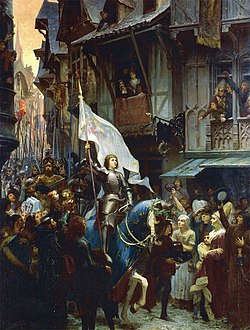This article needs additional citations for verification .(October 2024) |

Many people have engaged in cross-dressing during wartime under various circumstances and for various motives. This has been especially true of women, whether while serving as a soldier in otherwise all-male armies, while protecting themselves or disguising their identity in dangerous circumstances, or for other purposes.
Contents
- Prehistory, legend and mythology
- Historical
- Middle Ages
- Sixteenth century
- Seventeenth century
- Eighteenth century
- Nineteenth century
- Twentieth century
- Fiction
- References
Conversely, men would dress as women to avoid being drafted, the mythological precedent for this being Achilles hiding at the court of Lycomedes dressed as a woman to avoid participation in the Trojan War.
